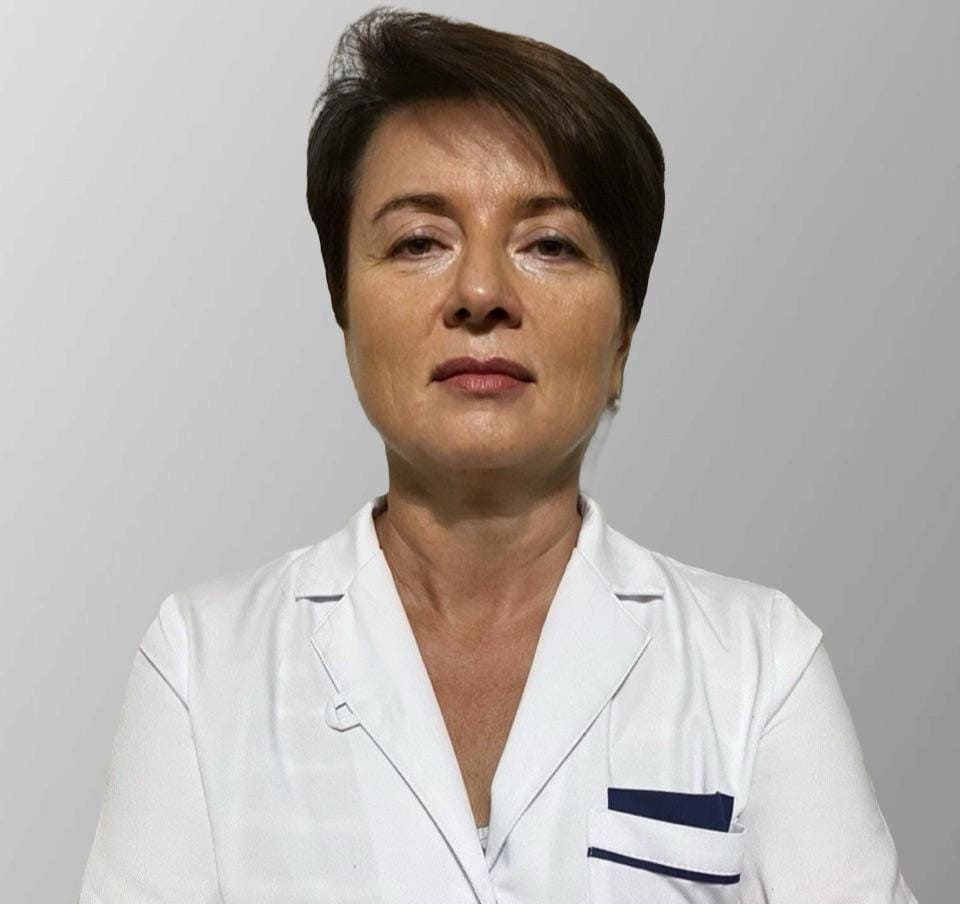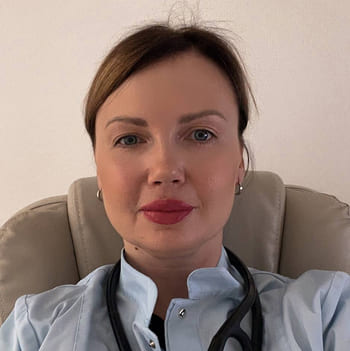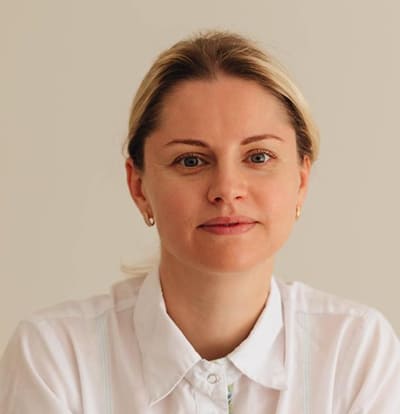
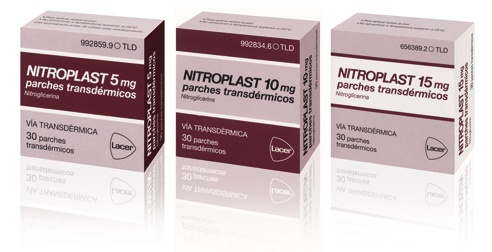
NITROPLAST 10 PENSOS TRANSDÉRMICOS

Pergunte a um médico sobre a prescrição de NITROPLAST 10 PENSOS TRANSDÉRMICOS

Como usar NITROPLAST 10 PENSOS TRANSDÉRMICOS
Introdução
Prospecto: Informação para o paciente
Nitroplast 10 mg patches transdérmicos
Nitroglicerina
Leia o prospecto detenidamente antes de começar a usar este medicamento, porque contém informações importantes para si.
- Conserva este prospecto, porque pode ter que voltar a lê-lo.
- Se tiver alguma dúvida, consulte o seu médico ou farmacêutico.
- Este medicamento foi prescrito apenas para si e não deve dá-lo a outras pessoas, mesmo que tenham os mesmos sintomas que si, porque pode prejudicá-las.
- Se experimentar efeitos adversos, consulte o seu médico ou farmacêutico, mesmo que se trate de efeitos adversos que não aparecem neste prospecto. Ver seção 4.
Conteúdo do prospecto
1.- O que é Nitroplast e para que é utilizado
2.- O que precisa saber antes de começar a usar Nitroplast
3.- Como usar Nitroplast
4.- Possíveis efeitos adversos
5.- Conservação de Nitroplast
6.- Conteúdo do envase e informação adicional
1. O que é Nitroplast e para que é utilizado
Nitroplast é um patch transdérmico que contém nitroglicerina e que serve para prevenir a angina de peito, mas não para tratar os ataques agudos.
A nitroglicerina dilata os vasos sanguíneos e melhora o rendimento do coração.
Aplicado sobre a pele, Nitroplast libera a nitroglicerina a uma velocidade uniforme durante todo o período de aplicação recomendado.
Nitroplast está indicado para o tratamento preventivo da angina de peito, como tratamento único ou em combinação com outros tratamentos antianginosos.
2. O que precisa saber antes de começar a usar Nitroplast
Não use Nitroplast
? Se é alérgico (hipersensível) à nitroglicerina, aos nitratos orgânicos em geral ou a qualquer um dos outros componentes de Nitroplast (incluídos na seção 6).
? Se tem a tensão arterial muito baixa (pressão arterial sistólica inferior a 90 mmHg).
? Em caso de insuficiência circulatória aguda associada a uma marcada hipotensão (choque, colapso).
? Se padece doenças associadas a um aumento da pressão intracraniana.
? Se padece insuficiência cardíaca devida a obstrução valvular (estreitamento das válvulas do coração) ou inflamação do pericárdio que comprime o coração.
? Em casos de hipovolemia grave (diminuição do volume total de sangue).
? Em casos de choque cardiogênico (colapso circulatório de origem cardíaca), a menos que se mantenha uma pressão final diastólica com as medidas adequadas.
? Em casos de taponamento cardíaco (compressão aguda do coração).
? Se padece cardiomiopatia hipertrófica obstructiva (engrossamento do coração que dificulta a circulação).
? Se está tomando medicamentos que contenham sildenafilo, tadalafilo ou vardenafilo (medicamentos empregados para tratar a impotência ou a hipertensão arterial pulmonar).
? Não use Nitroplast simultaneamente com medicamentos que contenham riociguat (medicamento utilizado para o tratamento da hipertensão arterial pulmonar e da hipertensão pulmonar tromboembólica crônica).
Advertências e precauções
? Se tem uma diminuição da pressão de enchimento do coração, por exemplo, infarto agudo de miocárdio, falha ventricular esquerda. Deve-se evitar a redução da pressão sistólica por debaixo de 90 mmHg.
? Se padece hipotensão ortostática (diminuição da pressão arterial ao levantar-se).
? Se tem anemia, consulte o seu médico, é possível que Nitroplast não seja um tratamento adequado para si.
? Se tem ou teve alguma doença do pulmão ou do coração. Os pacientes com angina de peito, infarto de miocárdio ou isquemia cerebral, podem sofrer alterações das vias respiratórias pequenas.
? Em pacientes com angina de peito produzida pelo engrossamento do coração (miocardiopatia hipertrófica), o tratamento com Nitroplast pode piorar.
? Existe a possibilidade de um aumento da frequência de angina de peito durante o intervalo de tempo sem patch. Pode que o seu médico considere necessário outro tratamento antianginoso além de Nitroplast.
? Pode dar-se uma perda de eficácia por tratamento contínuo com outros medicamentos que contenham nitratos (tolerância).
? Pode produzir-se um aumento de metahemoglobina, forma oxidada da hemoglobina (pigmento do sangue) que origina metahemoglobinemia.
Nitroplast só será empregado sob estrita vigilância clínica e/ou monitorização hemodinâmica em pacientes com infarto agudo de miocárdio ou insuficiência cardíaca congestiva.
O tratamento com Nitroplast não deve ser interrompido bruscamente. O seu médico irá reduzir pouco a pouco a dose e irá aumentando os intervalos de administração. Se começar com outro tratamento para a angina de peito, durante um período de tempo, pode que tenha que utilizar ambos os medicamentos.
Nitroplast não contém alumínio nem outros metais, e por isso não é necessário retirar o patch antes de uma ressonância magnética ou manobras para restabelecer o ritmo normal do coração (cardioversão), porque não existe risco de queimaduras na pele por ter o patch aderido.
Crianças e adolescentes
A segurança e eficácia em crianças e adolescentes (menores de 18 anos) não foram estabelecidas.
Uso de Nitroplast com outros medicamentos
Informa ao seu médico ou farmacêutico se está utilizando, ou utilizou recentemente, qualquer outro medicamento, mesmo os adquiridos sem receita médica.
O uso de nitratos ao mesmo tempo que outros compostos vasodilatadores, como medicamentos para tratar a hipertensão, inibidores de PDE5, antagonistas do cálcio, inibidores da ECA, betabloqueantes, diuréticos, alguns antidepressivos e tranquilizantes maiores, podem baixar excessivamente a tensão arterial.
Os pacientes em tratamento com Nitroplast, nunca (nem mesmo se se retirou o patch) devem tomar conjuntamente inibidores da fosfodiesterase 5 (PDE5) como aqueles que contenham sildenafilo, tadalafilo ou vardenafilo (medicamentos usados para tratar a impotência e a hipertensão arterial pulmonar), porque podem produzir-se complicações cardiovasculares que ponham em perigo a vida do paciente. Para mais informações, consulte com o seu médico ou farmacêutico.
Os medicamentos anti-inflamatórios não esteroideos (AINE), excepto o ácido acetilsalicílico (aspirina), podem reduzir a ação de Nitroplast.
A administração com ácido acetilsalicílico (aspirina) pode potenciar a ação de Nitroplast.
O uso ao mesmo tempo de Nitroplast com riociguat (medicamento utilizado para o tratamento da hipertensão arterial pulmonar e da hipertensão pulmonar tromboembólica crônica) pode causar hipotensão.
O uso ao mesmo tempo de Nitroplast com dihidroergotamina (medicamento utilizado para tratar a enxaqueca) pode aumentar a quantidade de dihidroergotamina no sangue. Isso é importante em pacientes com doença arterial coronária, porque a dihidroergotamina contrarresta a ação de Nitroplast, provocando vasoconstricção coronária.
A administração simultânea de Nitroplast com amifostina (fármaco que se usa para reduzir os efeitos secundários não desejados de algumas quimioterapias e radioterapias) e ácido acetilsalicílico pode baixar demasiado a tensão arterial.
A administração simultânea com sapropterina, cofator de uma enzima denominada óxido nítrico sintetasa, pode aumentar o efeito hipotensor de Nitroplast.
Devido ao desenvolvimento de tolerância à nitroglicerina, pode diminuir parcialmente o efeito da nitroglicerina sublingual.
Uso de Nitroplast com alimentos, bebidas e álcool
O uso concomitante de Nitroplast e álcool pode aumentar o efeito hipotensor (diminuição da pressão arterial) de Nitroplast.
Gravidez, lactação e fertilidade
Se está grávida ou em período de lactação, acredita que possa estar grávida ou tem intenção de ficar grávida, consulte o seu médico ou farmacêutico antes de utilizar este medicamento.
Gravidez
Em caso de gravidez ou suspeita de gravidez, deve advertir o médico. Nitroplast deve ser empregado com precaução durante a gravidez, especialmente nos 3 primeiros meses.
Lactação
Se se encontra em período de lactação, deve advertir o médico, porque deve decidir se é necessário interromper a lactação ou interromper o tratamento, após considerar o benefício da lactação para o filho e o benefício do tratamento para a mãe.
Fertilidade
Não há dados disponíveis sobre o efeito da nitroglicerina sobre a fertilidade em humanos.
Condução e uso de máquinas
Nitroplast pode diminuir a capacidade de reação ou raramente causar hipotensão ortostática (diminuição da pressão arterial ao levantar-se) e tonturas (como também excepcionalmente síncope após uma sobredose). Os pacientes que sofram algum desses efeitos devem evitar conduzir veículos ou utilizar máquinas.
3. Como usar Nitroplast
Siga exatamente as instruções de administração de Nitroplast indicadas pelo seu médico. Consulte o seu médico ou farmacêutico se tiver dúvidas.
O médico estabelecerá as doses adequadas, tanto no início do tratamento como de manutenção, e determinará a frequência e duração do mesmo.
O patch será aplicado diariamente sobre a pele por espaço de 12 a 16 horas, assegurando assim um período livre de nitratos de 8 a 12 horas.
Para a aplicação de Nitroplast, qualquer zona da pele que não seja demasiado grossa e mal irrigada pode ser adequada, desde que esteja saudável, limpa, relativamente livre de rugas e sem pelo. As zonas mais recomendáveis para a aplicação são a parte frontal e lateral do peito. No entanto, também pode ser aplicado no antebraço, coxa, abdômen e ombro . Figura 1

Para evitar qualquer irritação da pele, Nitroplast deve ser aplicado em diferentes áreas cada dia, procurando não utilizar a mesma zona até transcorridos pelo menos 2-3 dias. Nitroplast não deve ser aplicado na parte distal das extremidades, em dobras cutâneas, cicatrizes amplas ou em áreas queimadas ou irritadas.
Nitroplast não se adere bem à pele húmida ou suja, por isso é importante que se limpe e seque a pele antes da sua aplicação. Não utilize produtos para o cuidado da pele antes da colocação do patch. Nitroplast conserva a sua função com o banho, a ducha ou o exercício físico.
Cada patch vem embalado em uma bolsa individual e não deve ser retirado da mesma até que vá ser utilizado. A bolsa precintada se rompe facilmente através de uma hendidura na borda. Figura 2
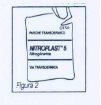
Retire o patch da bolsa e segure-o com ambas as mãos com a lâmina protetora para cima. Em seguida, baixe uma metade do patch, com o que se abre o corte em forma de S. Uma metade desta lâmina já pode ser então separada. A superfície adesiva não deve ser tocada. Figura 3

Em seguida, aplique o patch na área escolhida e elimine a outra metade da capa protetora. Figura 4

Pressione em seguida o patch com a mão para assegurar que toda a superfície adesiva se adira fortemente à pele. Figura 5.Depois da aplicação, lave bem as mãos.

Os patches de Nitroplast não devem ser cortados.
Uso em idosos: Não se requer ajuste de dose em pacientes idosos
Se você usa mais Nitroplastdo que deve
Não é provável a aparição de sintomas de sobredose devido ao tipo de formulação do patch transdérmico de Nitroplast. Em caso de que aparecessem, os sintomas podem ser rapidamente eliminados com a retirada do patch.
Os sintomas são diminuição da pressão sanguínea (menor ou igual a 90 mm de Hg), palidez, suor, pulso débil, aumento da frequência cardíaca (taquicardia), tontura postural, dor de cabeça (cefaleia), colapso, síncope com tontura postural, sensação de debilidade (astenia), náuseas, vômitos e diarreia.
Em pacientes em tratamento com outros nitratos orgânicos, foram descritos casos de metahemoglobinemia (já que os íons nitrito provocam metahemoglobinemia e cianose, com a consequente taquipneia, ansiedade, perda de consciência e ataque cardíaco). Embora com o método de liberação transdérmica seja improvável, em doses altas pode produzir-se aumento da pressão intracraniana, conduzindo a sintomas cerebrais.
- Procedimento geral:
Interromper a administração do medicamento, retirando o patch.
- Procedimento geral nos acontecimentos de hipotensão relacionada com nitratos:
Deve-se colocar o paciente em posição horizontal com as pernas elevadas, ou se necessário, aplicar um vendagem de compressão nas pernas do paciente.
Aporte de oxigênio.
Expansores de volume plasmático (líquidos intravenosos).
Tratamento específico para o choque (ingressar o paciente em uma unidade de cuidados intensivos).
- Procedimentos especiais:
Aumentar a pressão sanguínea se estiver muito baixa.
Administração adicional de um vasoconstritor, p. ex., cloridrato de norepinefrina.
Tratamento da metahemoglobinemia:
Redução do tratamento de eleição com vitamina C, azul de metileno ou azul de toluidina.
Administração de oxigênio (se necessário).
Iniciar respiração artificial.
Hemodiálise (se necessário).
O tratamento da metahemoglobinemia com azul de metileno está contraindicado em pacientes com deficiência de glucosa-6-fosfato ou de metahemoglobina-reductasa. Para os casos em que o tratamento está contraindicado ou não é eficaz, se recomenda a realização de uma transfusão sanguínea ou a transfusão de um concentrado de glóbulos vermelhos.
Medidas de reanimação:
Em caso de paro respiratório e circulatório, iniciar as medidas de ressuscitação imediatamente.
Em caso de sobredose ou ingestão acidental, consultar o Serviço de Informação Toxicológica, telefone 91 562 04 20.
Se você esqueceu de usarNitroplast
Não use uma dose dupla para compensar as doses esquecidas. Entre em contato com o seu médico.
Se interromper o tratamento comNitroplast
Se tiver alguma outra dúvida sobre o uso deste produto, pergunte ao seu médico ou farmacêutico.
4. Possíveis efeitos adversos
Como todos os medicamentos, Nitroplast pode produzir efeitos adversos, embora não todas as pessoas os sofram.
São detalhados a seguir os efeitos adversos produzidos durante o tratamento com Nitroplast:
? Muito frequentes: podem afetarmais de1 de cada 10 pacientes: dor de cabeça.
? Frequentes: podem afetar até1 de cada 10 pacientes: tonturas (incluindo tontura postural), sonolência, taquicardia, hipotensão postural, sensação de debilidade (astenia).
? Pouco frequentes: podemafetar até1 de cada 100 pacientes: aumento dos sintomas de angina pectoris, colapso circulatório (algumas vezes acompanhado por bradicardia e síncope), náuseas, vômitos, prurido, irritação da pele (coceira ou queimadura na zona de aplicação, vermelhidão, irritação), dermatite de contato (que desaparece espontaneamente às poucas horas de retirar o patch ou com o uso de corticoides tópicos), reações alérgicas na pele (p. ex., rash).
?
? Muito raros: podem afetar até 1 de cada 10.000 pacientes: ardor de estômago.
? Frequência não conhecida : não pode ser estimada a partir dos dados disponíveis:palpitações, rubor, hipotensão, dermatite exfoliativa, erupção generalizada na pele, aumento da frequência cardíaca.
Como alguns medicamentos utilizados para tratar doenças do coração, Nitroplast provoca frequentes dores de cabeça dependentes da dose administrada, devido à dilatação dos vasos sanguíneos do cérebro. Estas dores desaparecem após alguns dias, embora continue o tratamento com Nitroplast. Se a dor de cabeça persistir durante o tratamento intermitente, deve ser tratada com analgésicos suaves. Se, apesar disso, as dores persistirem, pode que o seu médico deva baixar a dose ou retirar o tratamento com Nitroplast.
Qualquer vermelhidão que apareça na pele normalmente desaparecerá em algumas horas após retirar o patch.
Deve mudar regularmente o local de aplicação para prevenir irritações locais.
Pode que o seu médico lhe prescreva outro tratamento simultâneo para evitar um pequeno aumento da sua frequência cardíaca.
Comunicação de efeitos adversos
Se experimentar qualquer tipo de efeito adverso, consulte o seu médico ou farmacêutico, mesmo que se trate de efeitos adversos que não aparecem neste prospecto. Também pode comunicá-los diretamente através do Sistema Espanhol de Farmacovigilância de medicamentos de Uso Humano: https://www.notificaram.es
Ao comunicar efeitos adversos, você pode contribuir para proporcionar mais informações sobre a segurança deste medicamento.
5. Conservação de Nitroplast
Mantenha fora do alcance e da vista das crianças.
Não armazene a temperatura superior a 25 ºC.
Não utilize Nitroplast 10 mg após a data de validade que aparece no envase e o sobre após “Cad”. A data de validade é o último dia do mês que se indica.
Os medicamentos não devem ser jogados nos deságues nem na lixeira. Deposite os envases e os medicamentos que não precisa no Ponto Sigre da farmácia. Em caso de dúvida, pergunte ao seu farmacêutico como se livrar dos envases e dos medicamentos que não precisa. Dessa forma, ajudará a proteger o meio ambiente.
6. Conteúdo do envase e informação adicional
Composição de Nitroplast 10 mg patches transdérmicos
O princípio ativo é a nitroglicerina. Um patch contém 37,4 mg de nitroglicerina em um patch de 18 cm2, que libera 10 mg cada 24 h.
Os outros componentes são copolímero acrilato/acetato de vinilo, lâmina dorsal de polipropileno, película de polietileno de tereftalato siliconizada e tinta.
Aspecto do produto e conteúdo do envase
Nitroplast são patches transdérmicos de cor branca translúcida, quadrados e com os bordos arredondados. Está disponível em envases com 7 e 30 patches transdérmicos.
Título da autorização de comercialização e responsável pela fabricação
Título da autorização de comercialização
LACER, S.A. - Boters, 5
08290 Cerdanyola del Vallès
Barcelona – Espanha
Responsável pela fabricação
Aesica Pharmaceuticals GmbH
Alfred-Nobel Strasse 10
40789 Monheim - Alemanha
ou
LACER, S.A. - Boters, 5
08290 Cerdanyola del Vallès
Barcelona – Espanha
Data da última revisão deste prospecto: junho 2017
A informação detalhada e atualizada deste medicamento está disponível na página web da
Agência Espanhola de Medicamentos e Produtos Sanitários (AEMPS) http://www.aemps.gob.es/

Quanto custa o NITROPLAST 10 PENSOS TRANSDÉRMICOS em Espanha em 2025?
O preço médio do NITROPLAST 10 PENSOS TRANSDÉRMICOS em dezembro de 2025 é de cerca de 15.42 EUR. Os valores podem variar consoante a região, a farmácia e a necessidade de receita. Confirme sempre com uma farmácia local ou fonte online para obter informações atualizadas.
- País de registo
- Preço médio em farmácia15.42 EUR
- Substância ativa
- Requer receita médicaSim
- Fabricante
- Esta informação é apenas para referência e não constitui aconselhamento médico. Consulte sempre um médico antes de tomar qualquer medicamento. A Oladoctor não se responsabiliza por decisões médicas baseadas neste conteúdo.
- Alternativas a NITROPLAST 10 PENSOS TRANSDÉRMICOSForma farmacêutica: ADESIVO TRANSDÉRMICO, 37,4 mg de nitroglicerinaSubstância ativa: glyceryl trinitrateFabricante: Merus Labs Luxco Ii S.À.R.L.Requer receita médicaForma farmacêutica: ADESIVO TRANSDÉRMICO, 18,7 mg de nitroglicerinaSubstância ativa: glyceryl trinitrateFabricante: Merus Labs Luxco Ii S.À.R.L.Requer receita médicaForma farmacêutica: ADESIVO TRANSDÉRMICO, 31,37 mgSubstância ativa: glyceryl trinitrateFabricante: Casen Recordati S.L.Requer receita médica
Alternativas a NITROPLAST 10 PENSOS TRANSDÉRMICOS noutros países
As melhores alternativas com o mesmo princípio ativo e efeito terapêutico.
Alternativa a NITROPLAST 10 PENSOS TRANSDÉRMICOS em Polónia
Alternativa a NITROPLAST 10 PENSOS TRANSDÉRMICOS em Ukraine
Médicos online para NITROPLAST 10 PENSOS TRANSDÉRMICOS
Avaliação de posologia, efeitos secundários, interações, contraindicações e renovação da receita de NITROPLAST 10 PENSOS TRANSDÉRMICOS – sujeita a avaliação médica e regras locais.



